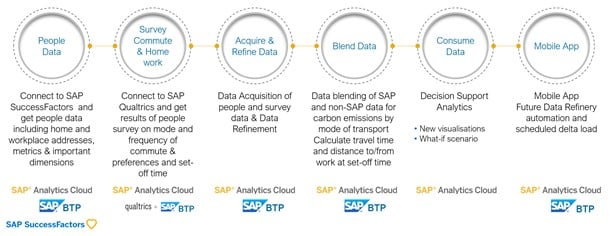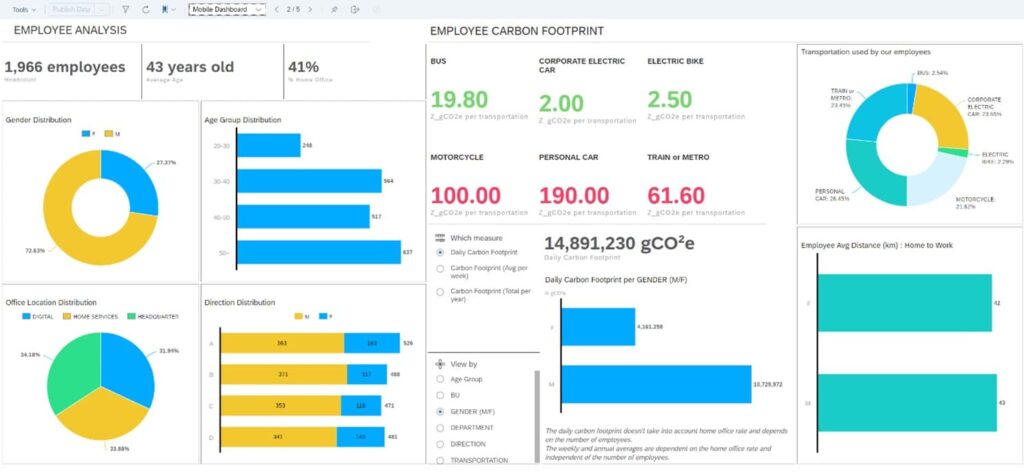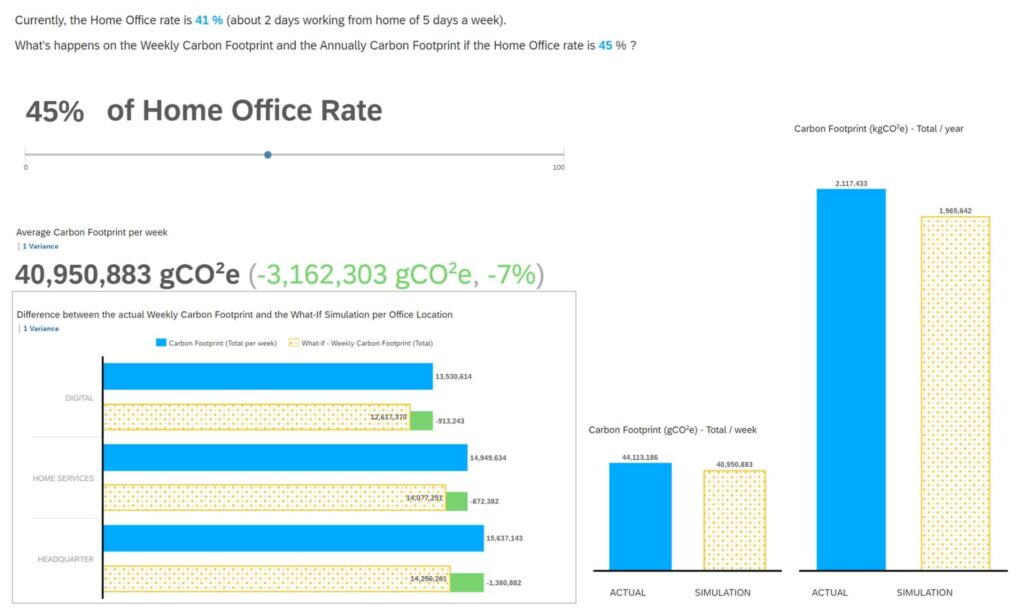If there’s one thing that knowledge workers have learned throughout the pandemic, it’s that they can be highly productive working remotely. Employees with strong digital skills were abruptly cast out of offices and forced to work from home. Before long, many began relocating away from cities to less populated areas, or from colder regions to vacation destinations – sometimes in other countries. Unbound from the office, knowledge workers became free-range employees – and most don’t want to go back.
According to a pulse survey conducted by the Future Forum, 76% of employees want flexibility in where they work and 93% flexibility in when they work. The desire for flexible work is strongest among women, working parents, and employees of color who have shown gains in feelings of belonging working remotely. Specifically, 81% of Black respondents say they want flexibility in where they work, compared to 75% of White respondents.
This data is in direct contrast to what most executives report that they want in post-pandemic workforce policies. Of those currently working fully remotely, nearly half of all executives surveyed (44%) want to work from the office every day, compared to 17% of employees. And 75% of these executives say they want to work from the office three to five days a week versus only 34% of employees.
So, what are companies to do? How can they make informed decisions about what’s best for leaders, for the business, and for their employees?
Applying a Sustainability Lens to Work Location Decision
One way of looking at the issues of return to office or hybrid work is from a business sustainability perspective. For example, if forcing people back to the office will make critical employees more likely to leave their jobs, you have a real flight risk issue impacting the sustainability of your business. Your business must have enough people with the right skills at the right time to propel it forward.
Another perspective to consider is how today’s business environment has been transformed by climate change, nature loss, and more. The planet needs change, and people demand change. What if, when making decisions about who comes into the office and when, executives considered the carbon footprint generated by employee travel and commutes, weighed against the energy usage working from home, along with the sustainability causes that their employees support?
This would require implementing next-generation holistic steering and reporting that maps operational and experiential data to show progress on goals such as reducing the carbon footprint of the business. Imagine executives having climate and natural capital accounting at their fingertips, including individual and collective employee carbon footprint tracking.
This is the kind of holistic steering and reporting that groups such as the World Economic Forum (WEF) want companies to integrate into their strategic decision-making. Integrating economic, environmental, and social performance data into decisions – referred to as Stakeholder Capitalism Metrics – can help executives serve their own goals, respect their employees’ preferences for when and where they work, and contribute to reaching sustainability goals that make the world a cleaner, greener place.
How SAP Can Help
In 2020, SAP committed to enable companies to report on the WEF’s Stakeholder Capitalism Metrics. As promised, we have delivered SAP Sustainability Control Tower to help enable holistic enterprise-wide sustainability performance management. SAP also made it easier to become a sustainable business and reduce carbon footprints with SAP Product Footprint Management, which can enable businesses to move toward lower carbon emissions and more sustainable operations. SAP’s data-driven approach lets businesses embed sustainability comprehensively and gain actionable insights across the entire value chain to enable companies to transition to low-carbon business processes.
Faced with an ambitious sustainability agenda and carbon-lowering targets, one SAP customer wanted to go further and consider the employee wishes for home/office work, and the carbon emissions generated from their commute to work against the energy efficiency of their home offices. The company had committed to lowering its enterprise carbon emissions and wanted a mechanism to support managers’ operational workforce planning processes.
SAP built a proof of concept (PoC) application in just one day once the employee survey was collected. The PoC decision support application was realized as follows:
Employee address data was acquired from SAP SuccessFactors Employee Central records using the standard delivered API. SAP Data Quality Management and microservices for location data were used for both data cleansing – a big bonus since the customer was able to cleanse inaccurate addresses in SAP SuccessFactors Employee Central – and data enrichment to geocode the home and work addresses with the latitude, longitude, and altitude information. The world of geo-location services was opened.
Demographic measures and dimensions were acquired from SAP SuccessFactors Workforce Analytics using the standard SAP Analytics Cloud connector.
While trying to understand employee sentiment on workplace and flexibility preferences, a survey was created using Employee Experience Management Solutions from SAP and Qualtrics. The survey allowed for employees, whose jobs enabled them to work from home, to answer questions relating to their preferences for the number of days a week they wanted to work from home and their commute (means and time of travel). The insights gathered allowed us to understand that the travel time to work – not distance – is a major factor in determining retention risk amongst various demographic groups and so the information was valuable input for the flight risk tool they had in SAP Analytics Cloud enterprise reporting.
SAP Business Technology Platform was then able to use external Web services and geo-location services to calculate the travel distance and travel time to work by various means of transport. One of the services was then able to determine the carbon emissions for the means of travel that the employee had specified. The commute travel time by job grade is a leading predictor of flight risk and is easily added to the flight risk prediction dataset.
The systems also gathered information of all the corporate and possible work locations. This opened the possibility for work location optimization, but it was not part of the scope of the PoC.
The data was then blended using SAP Business Technology Platform, specifically SAP Data Warehouse Cloud, and anonymization views were defined to protect actual home addresses from being shown. Real-time SAP HANA data anonymization allowed the application to use actual addresses to accurately calculate the travel metrics while safely anonymizing sensitive data for dashboard visualization and drill-down.
A dashboard was built and refined to analyze and interrogate the employee commute measures and identify specific employee carbon emissions each working day. Geospatial representation and visualization were built and demonstrated with interactive zoom and data filters. A what-if scenario was demonstrated with graphs and metrics calculated in real time to show the specific carbon emission impact of changing the percentage of time spent working remotely.
As shown in the below process, this PoC was achieved using various SAP solutions, including SAP SuccessFactors solutions on SAP Business Technology Platform.

In Summary
Executives can make better decisions about the impact of employees going back to the office and how often, considering the social and actual carbon emissions from commutes in their people planning. Using SAP SuccessFactors solutions for employee information to geocode the distance of employees from the office and utilizing Employee Experience Management Solutions from SAP and Qualtrics to layer experience insights to determine preferences, they can analyze carbon emissions for different types of commutes and make data-driven decisions to fuel their sustainability initiatives.
As shown in the below figure, executives can even look at this data by employee gender, race, and age. This helps them better assess, for instance, how many employees have strong preferences and who would become a flight risk should the business choose to mandate regular employee in-office attendance.

Finally, the figure below shows the simple what-if scenario to demonstrate how quickly and effectively analytics interfaces can be built, in this case, incorporating a slider bar and immediate impact of the change for the pre-filtered employees.

This kind of sustainability data and analysis empowers executives to find the “sweet spot” in decisions that balance their preferences against employee preferences and align them to important goals such as reducing their carbon footprint.
Suddenly, what’s best for all becomes quite clear.
Learn more at www.sap.com/people-analytics.
Tammie Eldridge is part of Solution Marketing at SAP SuccessFactors.



